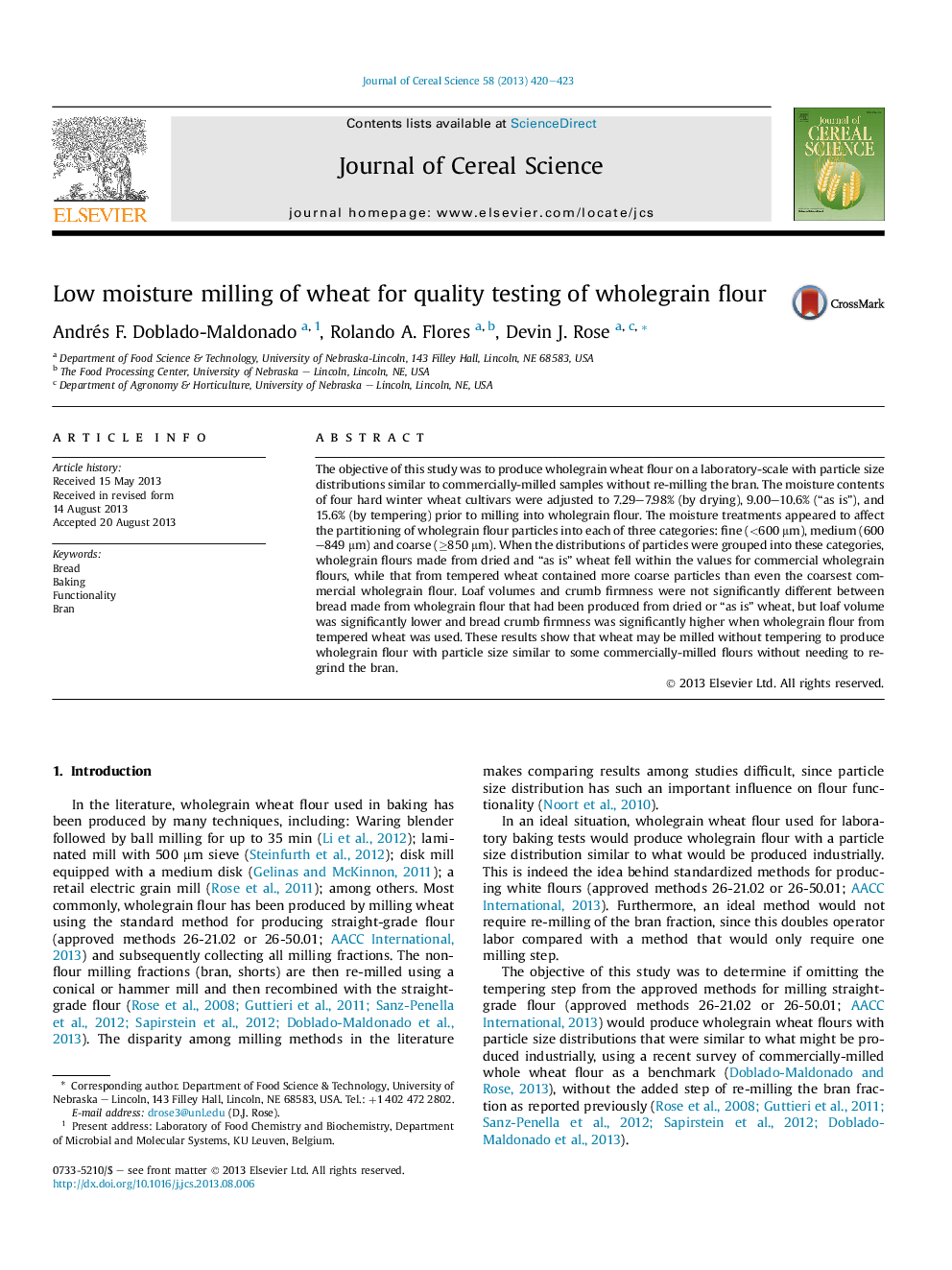| Article ID | Journal | Published Year | Pages | File Type |
|---|---|---|---|---|
| 4515993 | Journal of Cereal Science | 2013 | 4 Pages |
•Wheat was milled at different moisture contents to produce wholegrain flour.•Wholegrain flour from untempered wheat did not require re-grinding of bran fraction.•Whole flour from untempered wheat had particle sizes in the range of commercial.
The objective of this study was to produce wholegrain wheat flour on a laboratory-scale with particle size distributions similar to commercially-milled samples without re-milling the bran. The moisture contents of four hard winter wheat cultivars were adjusted to 7.29–7.98% (by drying), 9.00–10.6% (“as is”), and 15.6% (by tempering) prior to milling into wholegrain flour. The moisture treatments appeared to affect the partitioning of wholegrain flour particles into each of three categories: fine (<600 μm), medium (600–849 μm) and coarse (≥850 μm). When the distributions of particles were grouped into these categories, wholegrain flours made from dried and “as is” wheat fell within the values for commercial wholegrain flours, while that from tempered wheat contained more coarse particles than even the coarsest commercial wholegrain flour. Loaf volumes and crumb firmness were not significantly different between bread made from wholegrain flour that had been produced from dried or “as is” wheat, but loaf volume was significantly lower and bread crumb firmness was significantly higher when wholegrain flour from tempered wheat was used. These results show that wheat may be milled without tempering to produce wholegrain flour with particle size similar to some commercially-milled flours without needing to re-grind the bran.
